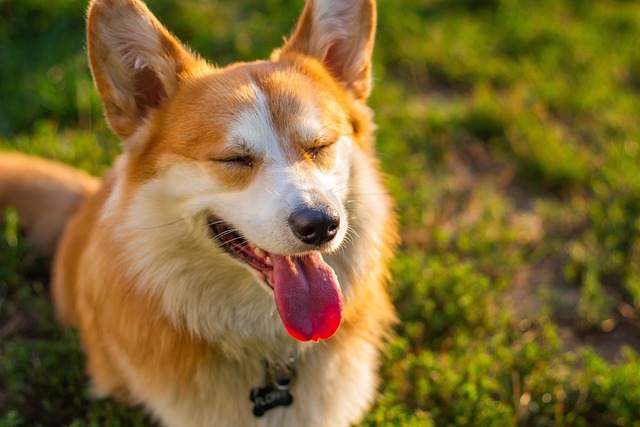
How do i train my dog to be obedient?
Watching your dog dart across the park ignoring your calls isn’t just frustrating—it can put them at risk near busy streets or public spaces.
When we take our dogs out to play or have multiple dogs at home, we may suddenly encounter aggressive behavior between dogs. At that moment, the scene of the dogs baring and fiercely confronting each other made us, as owners, both worried and nervous. The aggressive behavior between dogs may not only cause physical harm to the dogs themselves, but also affect their mental health. To handle this issue properly, the key is to have a deep understanding of the underlying reasons and take appropriate measures to address them.
Territorial awareness is one of the common factors that trigger aggressive behavior in dogs. Dogs have a strong territorial instinct and consider their frequently active areas as their territory. When other dogs break in, especially unfamiliar ones, they will think that their territory has been violated and launch attacks out of their protective instincts. For example, on the lawn of a residential area, a dog is playing. When another dog approaches, it may immediately make a warning sound. If the other dog has no intention of leaving, it may trigger intense fighting.
Resource competition is also an important reason for dog attacks. Food, toys, and owner's attention can all become resources that dogs compete for. In multi dog households, if food is not properly distributed during feeding, dogs may fight fiercely for more food. Alternatively, when the owner takes out a new toy and several dogs want to own it alone, it can also easily lead to conflicts.
Dogs' social skills and past experiences can also affect their interactions with each other. If dogs lack opportunities to socialize with other dogs during their puppy years and fail to learn the correct social skills, they are prone to developing aggressive behavior when interacting with their peers due to misunderstandings of their behavioral intentions. Dogs that have been attacked by other dogs in the past will also be wary and hostile towards their own kind. Once they feel threatened, they will initiate an attack first.
When aggressive behavior is detected between dogs, the first thing to do is to stop it promptly and safely. Never directly use your hands to pull a fighting dog, as this may result in injury. Tools such as long sticks, brooms, etc. can be used to separate dogs, create noise, attract their attention, and temporarily stop their attacks. For example, if you hit the ground hard and make a loud sound, the dog may separate due to being scared.

After stopping the attack, it is necessary to calm the emotions of each dog separately. Use a gentle tone and gentle movements to make your dog feel comforted and cared for, helping them calm their excited emotions. You can give your dog some snacks that they like, divert their attention, and help them relax from the tense state of attack.
Afterwards, it is necessary to analyze the reasons for the occurrence of the attack behavior. If it's a territorial issue, try to avoid letting your dog enter the territory of other dogs when they're out, or use a leash to control your dog when entering unfamiliar areas. For resource competition issues, in multi dog households, it is necessary to provide each dog with an independent food bowl, water bowl, and toy to avoid conflicts arising from resource competition. Meanwhile, when feeding and playing, it is important to ensure that every dog receives equal attention and care from its owner.
If the attack is caused by social problems, the owner can help the dog with social training. Starting from letting the dog observe other dogs from a distance, gradually shorten the distance while giving encouragement and rewards to help them learn to relax and get along well with each other. You can take your dog to participate in some dog social activities, giving them more opportunities to interact with other dogs and improve their social skills.
The aggressive behavior between dogs is not scary. As long as we observe and understand with our hearts, and use scientific methods to handle and guide them, we can help dogs get along harmoniously. Every dog has its own personality and needs. As owners, we should give them enough care and patience to live happily in a loving and harmonious environment. Let's work together to make the interactions between dogs friendly and joyful, accompanying us through more wonderful times.

Watching your dog dart across the park ignoring your calls isn’t just frustrating—it can put them at risk near busy streets or public spaces.

New puppy owners often find themselves rushing to clean up accidents before they set in, and that’s where puppy pad training becomes a game-changer.

If you've noticed your dog's waistline disappearing and your veterinarian has mentioned those few extra pounds, your first instinct might be to simply reduce the amount of food in their bowl.

Training a dog to use a designated spot indoors isn’t as daunting as many new owners fear, but it does take consistency and an understanding of your pet’s needs.

That moment of dread on a walk is all too familiar for many new dog owners. You see another dog approaching down the sidewalk of your neighborhood

If the sight of another dog on your neighborhood walk makes your heart sink as your own dog erupts into a frenzy of barking and lunging, you're not alone.